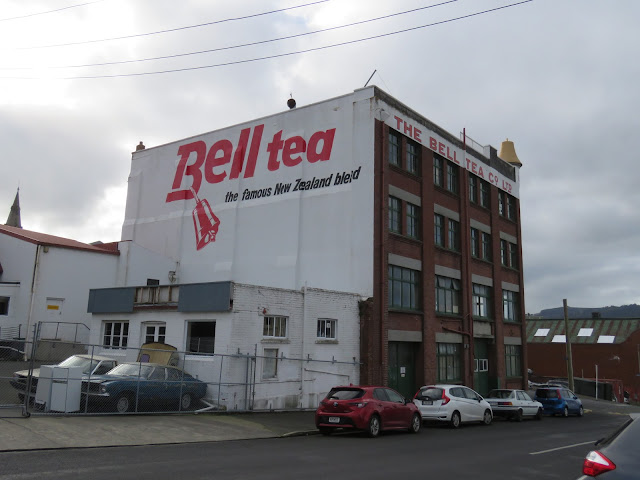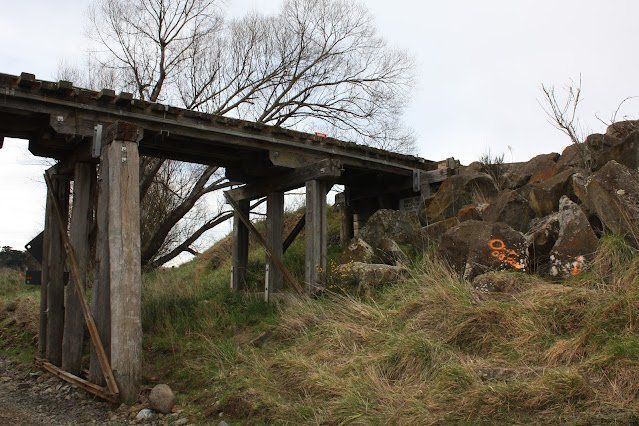Tiger Tea poster from 1905 by commercial artist Peter McIntyre. Image courtesy of Te Ara The Encyclopedia of New Zealand. A link to the Te Ara can be found here
On my travels across this beautiful region I saw a number of interesting murals and advertisements for Tiger Tea. After taking some photos and doing some online research, I found a local topic that begged to be covered. So while this blog normally covers railways and infrastructure, here is a post on Tiger Tea and its remaining presence across Otago.
The lower South Island of New Zealand is known for its local delicacies - cheese rolls, Speights, blue cod and Bluff oysters to name a few. Another well known local product was Tiger Tea.
Tiger Tea advertisement from the Otago Daily Times and Witness in 1902. Image courtesy of the National Library of New Zealand. A link to the National Library can be found here
At the beginning of the 20th century, Dunedin was home to a number of different tea brands. One of these was Tiger Tea, which was first produced by J. Rattray and Son's Ltd. in 1890.
Tea was a big deal in Aotearoa New Zealand and was consumed in large quantities. In 1910, New Zealanders were consuming an average of 3.4 kilograms of tea per person per year. By the 1980's the consumption of tea and coffee had evened out at 2 kilograms per person per year. Coffee soon surpassed tea, partly due to the growth of New Zealand's café culture.
J. Rattray and Son Ltd. were proactive in promoting their tea across the lower South Island. Newspaper advertisements, posters, packaging and hand painted murals on dairies and grocery stores were all used to advertise Tiger Tea.
A five pound metal tin that contained Tiger Tea. Image courtesy of Digital NZ and Te Hikoi Museum Riverton. A link to Digital NZ can be found here.
In 1969, the Bell Tea Company purchased the Tiger Tea brand and began producing it at the their Hope Street factory in Dunedin.
The former Bell Tea Factory on the corner of Hope and Carroll Streets, Dunedin. 22/07/2023.
The former Bell Tea Factory on the corner of Hope and Carroll Streets, Dunedin. 22/07/2023.
In 2014, operations at the Hope Street factory ended. Tiger Tea remained available in the South Island but at a time of global business consolidation, the benefits of having a regional tea brand were not commercially viable and Tiger Tea quietly disappeared from the shelves of South Island grocery stores.While no longer available, Tiger tea has left an imprint on the lower South Island with many nods to its existence remaining across Otago.
Vogel Street is a Dunedin treasure with a number of repurposed and redeveloped commercial buildings that include businesses, apartments and cafes. One of these redeveloped buildings is the J. Rattray and Son Ltd building at 8 Vogel Street. This building was home to the Tiger Tea Section of the Rattray business. Now used as a apartments the building still holds onto its heritage with the name of the former owner outlined at the top of the building.
The J.Rattray and Son Ltd Building on Vogel Street, Dunedin. 22/07/2023.
Dunedin has an amazing street art trail with over 30 murals across the central city. The mural on the side of the building is called 'Annabel'. This was the first piece of major street art completed on the trail and was painted by local artist Jon Thom.
The front of the J.Rattray and Son Ltd Building on Vogel Street, Dunedin. 22/07/2023.
J.Rattray and Son actively promoted their Tiger Tea brand across the lower South Island. Most grocery stores and diaries had some form of Tiger Tea advertising including painted murals and signs. A few of these murals and signs still exist.
One of the most well known is the Tiger tea mural in Caversham. While the building is no longer a grocery store, the mural has been retained as part of the area's local history.
The Tiger tea mural on South Road, Caversham. 22/07/2023.
Alongside Otago Harbour at Ravensbourne is another example of Tiger Tea advertising. As part of its redevelopment into apartments, the old Ravensbourne Store received a facelift that included the restoration of the old advertising murals on the north side of the building. Tiger tea, Lanes soft drinks and Wards Ice Cream were all popular local products in their day.
Tiger tea, Lanes soft drinks and Wards Ice Cream advertising on the old Ravensbourne Store. 10/02/2024.
A photo of the Ravensbourne Store taken sometime in the 1970's. Image courtesy of the Dunedin City Council Facebook page.
Another Tiger tea mural can also be found on the southern side of the building.
Tiger tea mural on the Ravensbourne Store, Ravensbourne. 22/07/2023.
Tiger Tea advertising has influenced local artists with many artworks including this print by Hamish Allan inspired by the former Suttons grocery store in Port Chalmers.
Tiger Tea Shop by Hamish Allan.
The original Suttons grocery store in Port Chalmers. 22/07/2023.
Tiger Tea advertising wasn't limited to Dunedin either. At the old grocery store in Hampden, a mural remains on the building.
Tiger Tea mural on the old Hampden Store. 05/07/2023.
More Tiger Tea advertising can be found on the old store in the small North Otago settlement of Tokarahi. The store has been rebuilt as a home but the new residents have kept the sign as a nod to the buildings history.
 The Tiger Tea sign at the old Tokarahi Store. 04/07/2023.
The Tiger Tea sign at the old Tokarahi Store. 04/07/2023.
A close up of the sign.
Old stores like those at Hampden and Tokarahi played an important part in small rural communities but as roads and vehicles improved, people travelled to the larger towns for their shopping and these old country stores slowly disappeared.
Tokarahi Store and Post Office in 1939. Image courtesy of Culture Waitaki. A link to their excellent collection can be found here.
One of the most well known remaining examples of Tiger Tea advertising is Dunedin City Council Transport Trolley Bus Number 10.
DCCT Trolley Bus Number 10 in its striking Tiger Tea livery at St Kilda. Photo by Mark Jarka. In 1956, Dunedin's electric trams were phased out and replaced by trolley buses. The trolley buses were electrically powered using overhead wires. By the early 1960's Dunedin City Council Transport operated a fleet of 79 trolley buses across its extensive network of 14 bus routes. Starting in 1969, the trolley bus network was progressively closed in favour of diesel buses.
Trolley Bus No.10 was built in 1950 using a chassis made by Leyland in the UK with a body built by New Zealand Motor Bodies of Christchurch. Entering service in 1951, No.10 served Dunedin with distinction.
In 1976 Trolley Bus No.10 became a local celebrity when it was painted in the tiger striped Tiger Tea livery.
While the trolley buses had a reprieve with the oil crises of the 1970's, the writing was on the wall. No.10 was one of the last trolley buses operating in Dunedin when the final trolley bus routes were closed.
This wasn't the end for No.10. Due to its celebrity status No.10 was preserved and is now on display at Dunedin's Toitu Otago Settlers Museum.
Tiger Tea livered trolley bus No.10 at Toitu Otago Settlers Museum.
While I will always have a love for railways, I really enjoyed this side track into another part of Otago's history. I'm sure there will be more non-railway posts coming to this blog in the future.
And that's about it.

.jpg)







.jpg)










































